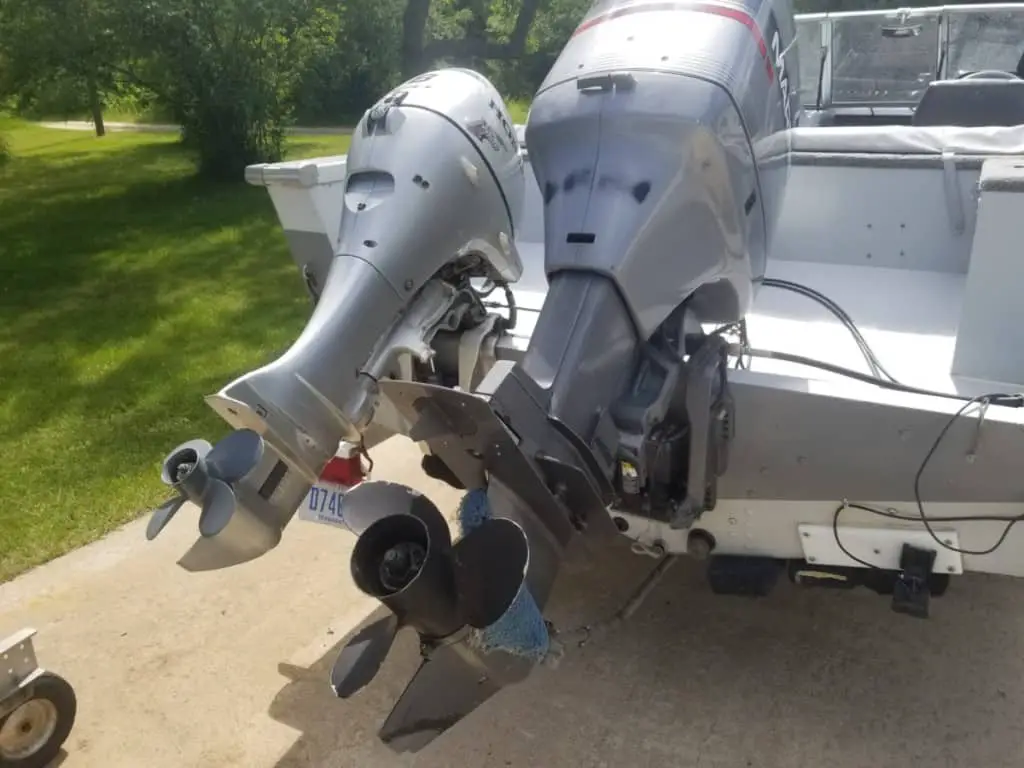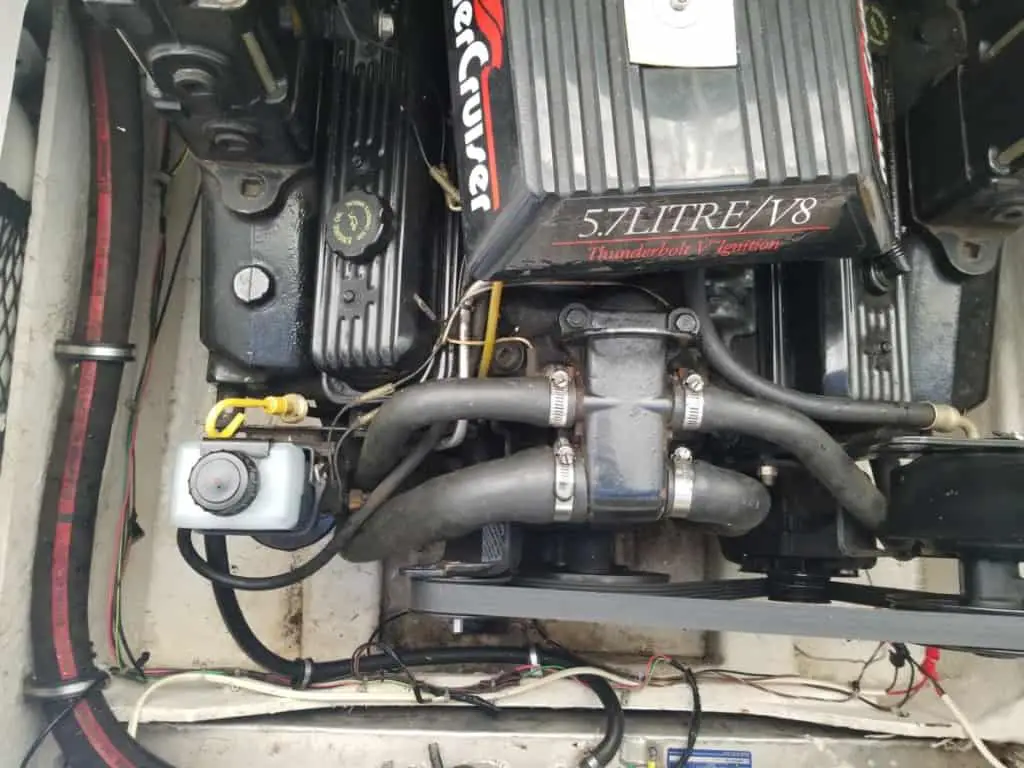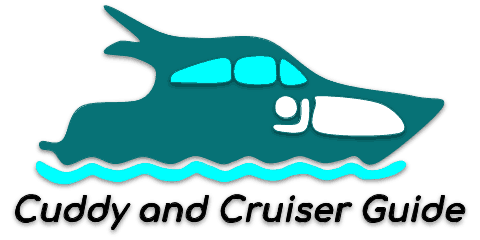If you’ve ever encountered excessive smoke coming from your boat engine, you know how concerning it can be.
Smoke from an engine can indicate various issues, some of which may be more serious than others.
In this comprehensive guide, we’ll take a deep dive into the world of boat engine smoke, exploring the common causes and symptoms associated with excessive smoke production. You’ll learn how to properly diagnose the root of the problem, understand why it’s occurring, and find step-by-step solutions to help you get your engine back in tip-top shape.
So, whether you’re an experienced boater or new to the world of marine engines, this article will provide you with the knowledge and resources needed to troubleshoot and fix excessive smoke issues, ensuring smooth sailing for you and your boat.

Incorrect Fuel Mixture
Two-stroke outboard marine engines typically require a fuel mixture instead of straight fuel. These engines rely on a mixture of gasoline and two-stroke oil to provide both lubrication and fuel for combustion. The oil in the mixture lubricates the internal components of the engine while it burns along with the gasoline. The specific fuel-to-oil ratio varies depending on the engine manufacturer’s recommendations, but a common ratio is 50:1, which means 50 parts gasoline to 1 part two-stroke oil.
In contrast, four-stroke outboard engines, inboard engines, and sterndrive engines do not require a fuel mixture. These engines have a separate lubrication system with engine oil in a crankcase, similar to an automobile engine, and use straight gasoline for combustion.
The fuel mixture in your boat engine plays a crucial role in its performance. An incorrect fuel mixture can lead to excessive smoke and reduced engine efficiency. This is particularly common in two-stroke outboard engines, which require a specific fuel-to-oil ratio.
Why It’s Occurring:
An incorrect fuel mixture may result from using the wrong type of oil, a poorly calibrated oil injection system, or simply miscalculating the fuel-to-oil ratio when manually mixing.
How to Fix:
- Double-check the manufacturer’s recommendations for the correct fuel-to-oil ratio.
- Ensure you’re using the appropriate type of oil for your engine.
- If your engine has an oil injection system, have it serviced and calibrated by a professional.
- If you’re manually mixing fuel and oil, carefully measure the quantities to achieve the correct ratio.
Clogged Air Filter
In the marine world, air filters are more commonly found in inboard and sterndrive engines, which are typically based on automotive engines. These engines use air filters to prevent dust, dirt, and other debris from entering the engine’s intake system and causing damage or reduced performance.
Outboard engines, on the other hand, usually do not have air filters because they are designed to operate in a cleaner environment above the waterline and utilize a water-cooled system. Additionally, since outboard engines are more exposed to water, having an air filter could increase the risk of water ingestion, leading to engine damage.
A clogged air filter can reduce the amount of air entering your boat engine, leading to incomplete combustion which results in increased smoke production.
Why It’s Occurring:
Air filters can become clogged with dirt, debris, and dust over time, particularly in dusty or dirty environments.
How to Fix:
- Locate the air filter on your engine (refer to the owner’s manual if necessary).
- Remove the air filter and inspect it for excessive dirt or debris.
- Clean the air filter according to the manufacturer’s instructions, or replace it if necessary.

Worn Piston Rings or Cylinder Walls
Both two-stroke and four-stroke marine engines, including outboard, inboard, and sterndrive engines, can experience excessive smoke due to worn piston rings. Worn or damaged piston rings can allow engine oil to seep into the combustion chamber, where it burns and produces smoke. This issue can also result in decreased engine performance, increased oil consumption, and reduced compression.
In two-stroke engines, the worn piston rings can cause the oil from the fuel-oil mixture to enter the combustion chamber in excessive amounts, leading to excessive smoke as well. In four-stroke engines, the oil from the crankcase can pass the worn piston rings, causing similar issues. In both cases, replacing the worn piston rings is necessary to resolve the problem and minimize smoke emissions.
Why It’s Occurring:
Piston rings and cylinder walls wear over time due to normal engine operation. Excessive wear can be a sign of poor maintenance or an aging engine.
How to Fix:
- Have a professional mechanic perform a compression test to determine if worn piston rings or cylinder walls are the issue.
- If excessive wear is confirmed, the engine may require a rebuild or replacement.
Damaged or Leaking Valve Seals
Four-stroke marine engines, including inboard and sterndrive engines, can experience excessive smoke due to damaged or leaking valve seals. Valve seals are responsible for preventing oil from seeping into the combustion chamber from the top of the engine. When these seals become damaged or worn, engine oil can leak past them and enter the combustion chamber, where it burns and produces smoke.
This issue can be identified by observing blue or gray smoke coming from the exhaust, especially during the initial startup or when the engine is idling. To resolve the problem, it’s necessary to replace the damaged or leaking valve seals. This repair typically requires a skilled mechanic, as it involves disassembling the engine’s cylinder head to access and replace the valve seals.
Basically, valve seals help to prevent oil from entering the combustion chamber. If they are damaged or leaking, oil can seep in, leading to excessive smoke.
Why It’s Occurring:
Valve seals can become damaged due to normal wear and tear or poor maintenance practices.
How to Fix:
- Have a professional mechanic inspect the valve seals for damage or leakage.
- If necessary, replace the damaged valve seals.
Overfilled Engine Oil
Overfilled engine oil can cause excessive smoke in four-stroke marine engines, including inboard, outboard, and sterndrive engines. When the oil level is too high, it can lead to oil foaming or being forced into the combustion chamber due to increased pressures in the crankcase, resulting in smoke.
Why It’s Occurring:
Overfilling the engine oil can occur due to miscalculations during an oil change or a malfunctioning oil injection system.
How to Fix:
- Check the oil level in your engine according to the owner’s manual.
- If the oil level is too high, drain the excess oil until the appropriate level is achieved.
- If your engine has an oil injection system, have it serviced and calibrated by a professional.

Cracked or Damaged Exhaust Manifold
A cracked or damaged exhaust manifold can cause excessive smoke in four-stroke marine engines, including inboard and sterndrive engines. The exhaust manifold is responsible for collecting exhaust gases from the engine cylinders and directing them to the exhaust system. If the manifold is cracked or damaged, exhaust gases can escape and produce smoke.
Why It’s Occurring:
Exhaust manifolds can crack or become damaged due to age, corrosion, or excessive engine vibration.
How to Fix:
- Visually inspect the exhaust manifold for cracks or damage.
- If a crack or damage is found, have the exhaust manifold repaired or replaced by a professional.
Malfunctioning Fuel Injection System
A malfunctioning fuel injection system can cause excessive smoke in fuel-injected marine engines, which are typically four-stroke engines found in inboard, outboard, and sterndrive configurations. When the fuel injection system is not functioning correctly, it can cause improper fuel delivery, resulting in poor combustion and excessive smoke.
Why It’s Occurring:
Fuel injection systems can malfunction due to worn or damaged components, electrical issues, or software problems.
How to Fix:
- Have a professional mechanic inspect the fuel injection system for malfunctions or damage.
- Repair or replace any damaged components as needed.
Blown Turbocharger Seal
Turbocharged boat engines are generally found in diesel-powered inboard engines. Turbocharging is more common in high-performance or larger displacement marine diesel engines, as it helps increase the engine’s power output and efficiency by forcing more air into the combustion chamber.
For boats equipped with a turbocharged engine, a blown turbocharger seal can cause excessive smoke as oil leaks into the exhaust system.
Why It’s Occurring:
Turbocharger seals can fail due to age, wear, or damage from excessive heat or engine vibration.
How to Fix:
- Have a professional mechanic inspect the turbocharger for a blown seal.
- If necessary, replace the damaged seal or the entire turbocharger unit.
Final Takeaways
Excessive smoke from your boat engine can be both annoying and potentially harmful to your engine’s performance. By identifying the underlying cause and following the appropriate steps to fix the issue, you can ensure your engine operates efficiently and safely. Always consult your owner’s manual and consider seeking professional assistance if you’re unsure about any maintenance or repair procedures.
Happy Boating!
